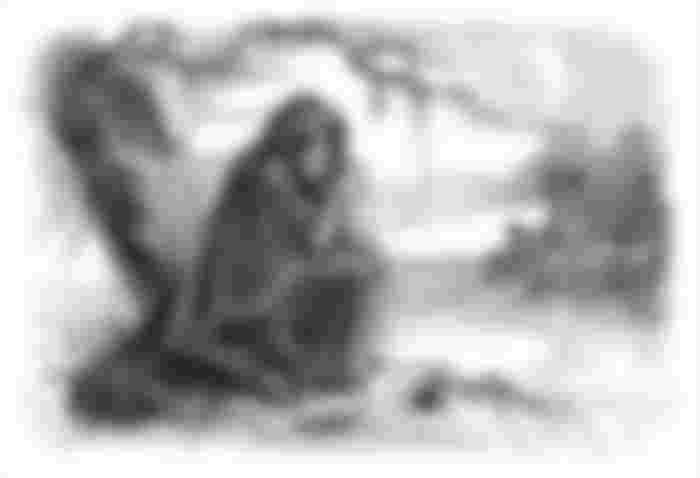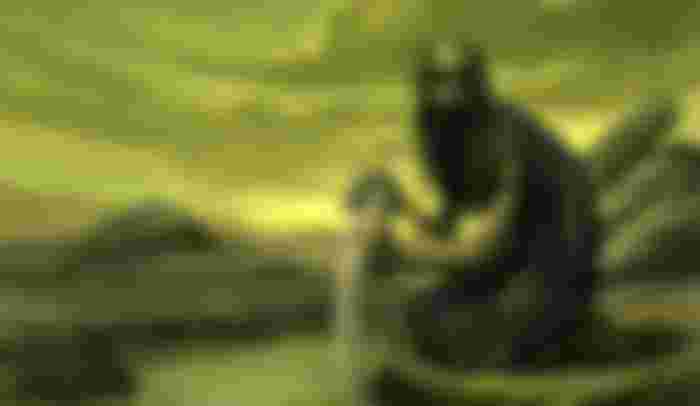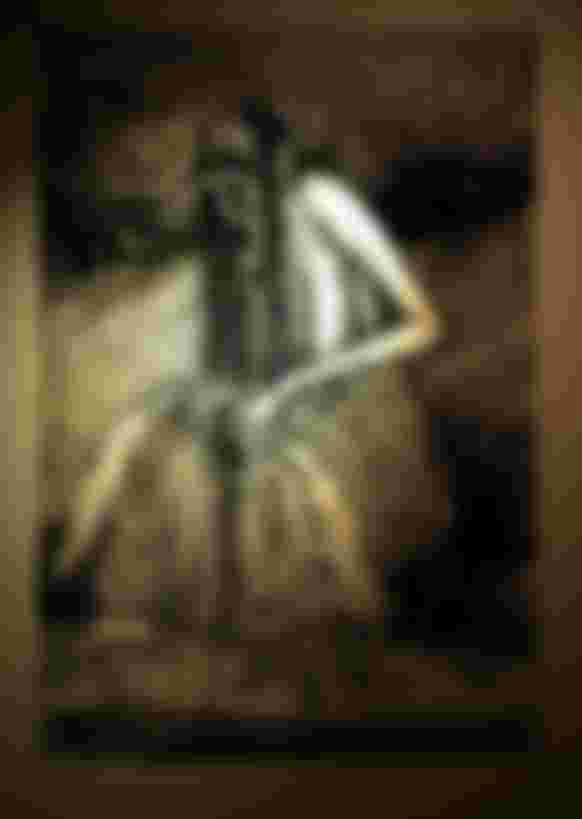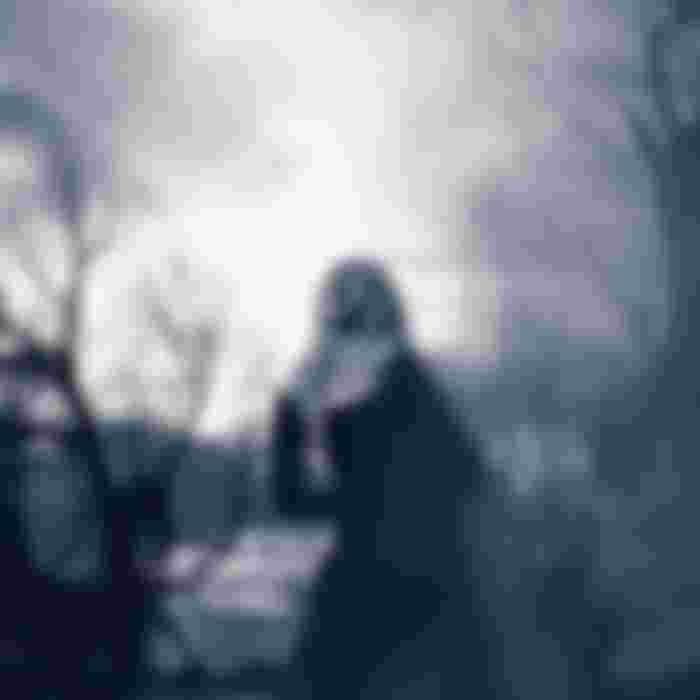Nim-nim-nim!
Deep dormant nights, late evenings, or rarely in Bharadupur, the villagers are shocked to hear this call. This is a mild but terrifying bird, which is considered to be unlucky. The call of this bird is believed to bring a message of evil. As if not bad news, absolutely a call to death. The people of the house who once called the neem bird sitting on a tree leaning on the edge of the backyard or on the rice, approached. Because this call means that it is time for one of the members of the house to leave. So no one wants to hear the call of the nimapakhi sadha. Everyone's comfort in the constant silent nimapakitei.
Neem-neem-neem, the words have a meaning; Neb-neb-neb. The words 'prana neb' are heard, so these three words sound as bitter as neem in the ears of people. In many parts of Bangladesh, the regional form of the word 'neb' is 'neem'. But there is another variant of neem bird in our country. In the south, the bird that calls is called ‘yamkokil’. Here ‘neem’ is replaced by ‘yam’; Both of them have kept their neatness with death!
Superstitions or folklore change with the passage of time, but there are often striking similarities between these practices or beliefs, no matter how far apart they may be. That is why some people know Nimapakhi as Yamkokil, while others are afraid of the same thing as a flute.

The flute, the flute of death
The flute is not exactly a bird, but a complete human being. Even in terms of culture, culture, or appearance, our ‘neem-cuckoo’ has nothing in common with it. The flute bus is also far away, in that far away from Ireland. In Ireland the flute is called by several names; Hag of the Mist, Little Washerwoman, Hag of the Black Head, these are the most popular of the many names. In Irish, Scottish, etc. In Celtic folklore, the flute is a fictional creation, a fairy. And this angel's job was to come to the house the night before someone died and to hear the sound of crying, that the only message of the cry role is to announce the news of a death in advance. Keening in English was an imitation of the lament of the flute. And after hearing this lament, someone in that house must have given up the illusion of life for one reason or another.
Canning is the custom of the Irish. The Rudali society of India does the same thing, lamenting and mourning for the dead, the main purpose of the Kinning tradition is the same. Sitting next to the grave of the deceased, a group of Irish women would mourn on behalf of the family. In the Scottish Gaelic language, they were known as mnàthan-trim. The flutes used to announce the sudden death in the middle of the night with such lamentations like the shores. Only in the case of flutes could this lament be heard before death. And the voice of the flute would have been a little more sad.

The source of the flute
There was a touch of money in the work of the shores, and the more breath there was in the tears, the more it was sold. So the work of the most skilled shores was done at the funerals of the aristocracy of the society. The people of the Banedi family believed that people, as well as angels, would come to their graves and shed tears. In Irish, these fairies were called 'bean sidhe'. The pronunciation of this word was 'banshi'. It was later translated into English as 'banshee'. This is how the story of the flute spreads its stalks and finally finds refuge in folklore.
There are some more similarities between the edge and the flute. Wine was given as a fee to the shores. Many of them used to get drunk in old age. So many times they were driven away from the village. It is not impossible to reconcile these outcast, isolated, aged people with the flute.
The flute is known to have a worldly relationship with the dead. The name Banshi originates from the Old Irish word 'fairy mound woman'. Some of the earthen tombs in the countryside of Ireland are scattered here and there. These mounds are called Tumuli. Tumulis were once believed to be inhabited by the spirits of the dead.
The first mention of the flute is found in the year 1360. The story of fleeing from the battlefield after hearing the cries of the flute in the jungle before the battle began is also heard in the history of Irish folklore. And it is through these stories that the flute legend builds a solid foundation.

What does the flute look like?
The form of the flute is multiple. Sometimes she is a beautiful young woman, sometimes a full-fledged young woman in a gorgeous outfit, and sometimes an ugly witch. He is wearing a Dhaka cloak from head to toe. The color of that cloak is either white or gray. According to those who claim to have seen him, the flute head has long white hair. Some say the flute combed her hair. Many people find it similar to shaking their heads in grief.
The flute's eyes are bright red, this stage of his eyes as a result of excessive crying. He was sometimes seen sitting by the pond cleaning blood from his cloak. However, in the case of Bean Night, the Scottish cousin of Banshi (Banshi: Bean Sidhe), it is seen that the person will die to clean the blood from his clothes. This is why another name of the flute is Little Washerwoman.
Scottish flute
Although the flute is Celtic folklore as a whole, it is predominant in Irish folklore. The equivalent of the flute in Scottish folklore, he is known as Ben Nai. A single nostril, a large protruding tooth, long drooping breasts, a greenish tinge; These features are mentioned in Ben Nai's description. His job is to clean the clothes of the people who are destined to die by the side of the abandoned fountain and drain.

It is said that the women who died in childbirth changed to Ben Nai. They will have to continue this cursed life as long as they live a normal life as human beings. If a man dares to hide and breastfeed while cleaning Ben Nai's clothes, he can claim to be Ben Nai's foster child and ask for a boon from him.
Flute Description
The flute never directly harms anyone. Some believe that women who have been murdered or died in childbirth are transformed into flutes. In the minds of others, the flute is the queen of the fairies who were forced to take refuge in the underworld after the arrival of mankind.
No one usually sees Banshi, but many have demanded to hear her cry. There are many counter-claims regarding the screaming of the flute. In some areas, his throat is so sharp that it causes the glass to rupture. Again in some areas, his cries are very harsh. There is the opposite. In another area, he can be heard singing in a soft, soft voice. But no matter how he lamented, his intense sympathetic voice could be heard from afar. Some claim that Banshi mourned for several nights before his future death. Some believe that the flute only appears to cry on the night of death. Her voice fluctuated as she cried, and for about a minute the flute rumbled in the air.

Another common misconception about flutes is that they arise only to warn of the death of a certain family member. These families are basically some of the main Irish families; O'Connor, O'Neills, O'Brians, O'Grady's, and Cavanaughs. These dynasties are known as the most fundamentalist dynasties in Ireland. According to another claim, the cries of multiple flutes can be heard before the death of an influential, important person.
In the early days of the flute legend, they were only seen by people whose deaths were very painful. Such as- accidental death, murder, etc. According to later stories, the flute would stand outside the door and cry, but it was difficult to meet him.
Those who do not forget the story of the flute, claim that the flute calls that people have heard are nothing but the call of the Lakshmi Pancha or khenksiali. The funny thing is, our nimapakhio but in fact a kind of owl. Jibanananda also mentions this bird known as Nimpancha or Nimkhor Pancha in his poems.
-The nymph that flies in the morning in the blue tamarind forest with a tingling emotion-
Thanks for reading my article by @ilias




